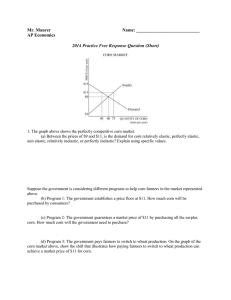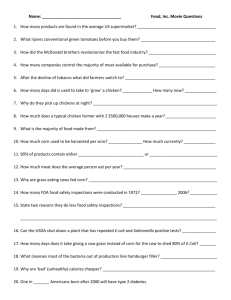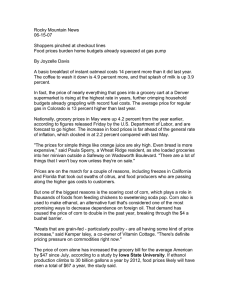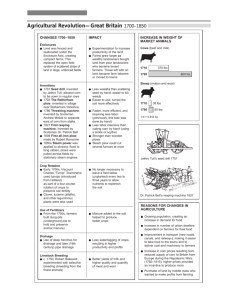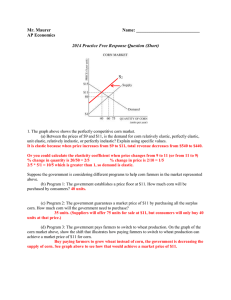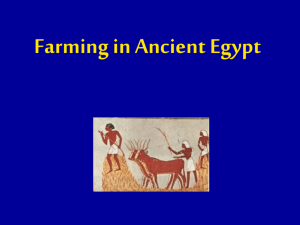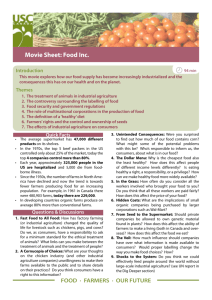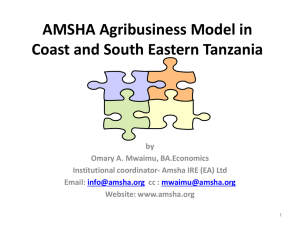9/10 History and Current Events: A Second Agricultural Revolution
advertisement
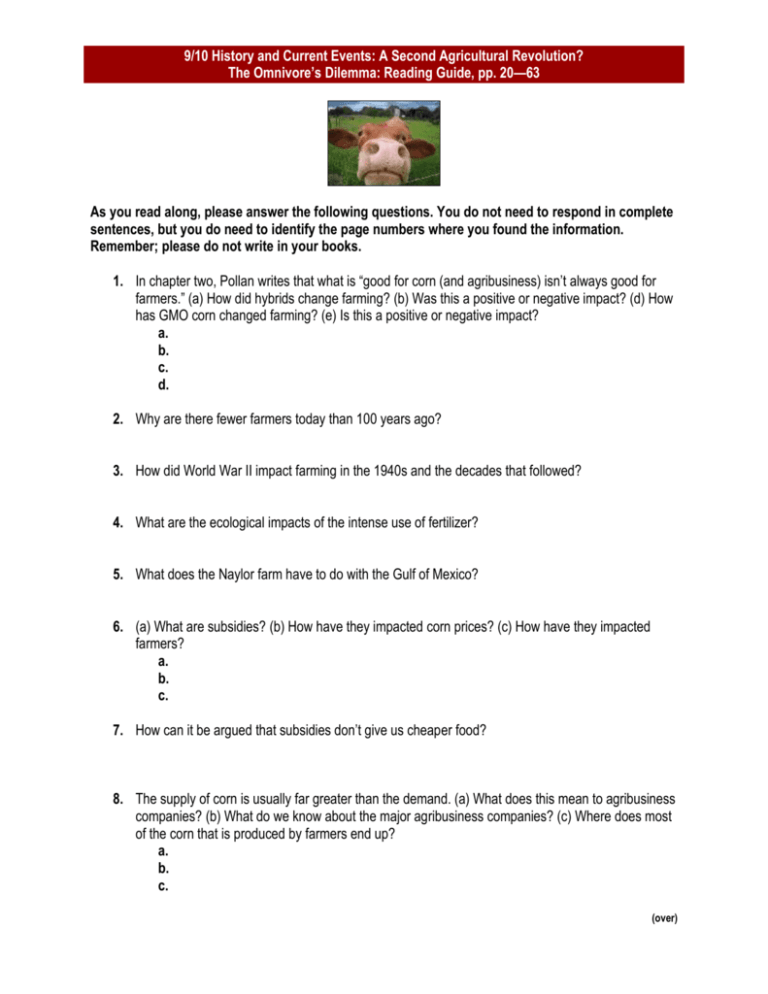
9/10 History and Current Events: A Second Agricultural Revolution? The Omnivore’s Dilemma: Reading Guide, pp. 20—63 As you read along, please answer the following questions. You do not need to respond in complete sentences, but you do need to identify the page numbers where you found the information. Remember; please do not write in your books. 1. In chapter two, Pollan writes that what is “good for corn (and agribusiness) isn’t always good for farmers.” (a) How did hybrids change farming? (b) Was this a positive or negative impact? (d) How has GMO corn changed farming? (e) Is this a positive or negative impact? a. b. c. d. 2. Why are there fewer farmers today than 100 years ago? 3. How did World War II impact farming in the 1940s and the decades that followed? 4. What are the ecological impacts of the intense use of fertilizer? 5. What does the Naylor farm have to do with the Gulf of Mexico? 6. (a) What are subsidies? (b) How have they impacted corn prices? (c) How have they impacted farmers? a. b. c. 7. How can it be argued that subsidies don’t give us cheaper food? 8. The supply of corn is usually far greater than the demand. (a) What does this mean to agribusiness companies? (b) What do we know about the major agribusiness companies? (c) Where does most of the corn that is produced by farmers end up? a. b. c. (over) 9. How has cattle ranching changed in the last few decades? Does it even make sense to call it cattle ranching? 10. What are some of the effects of feeding corn to beef? List at least three possible impacts. a. b. c.


